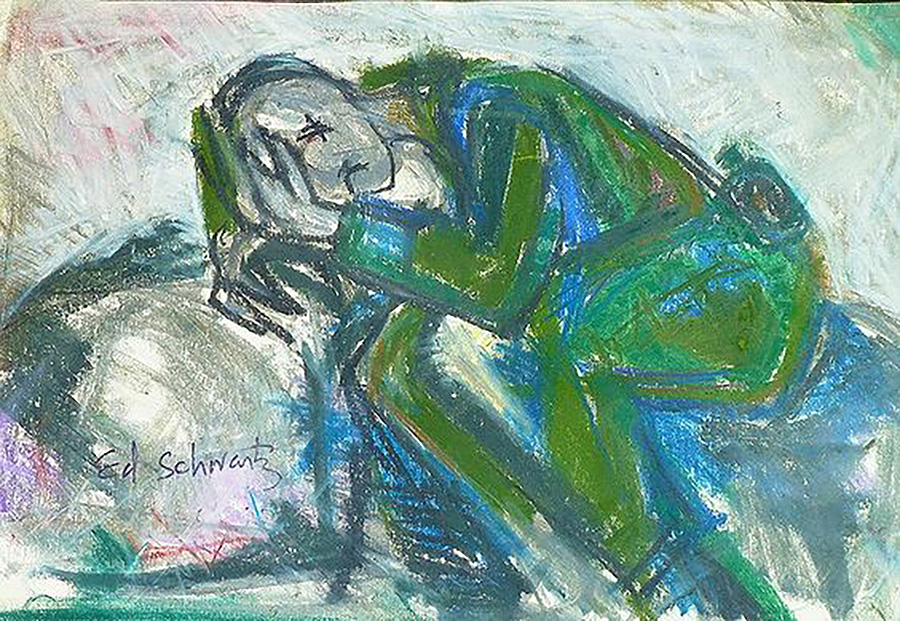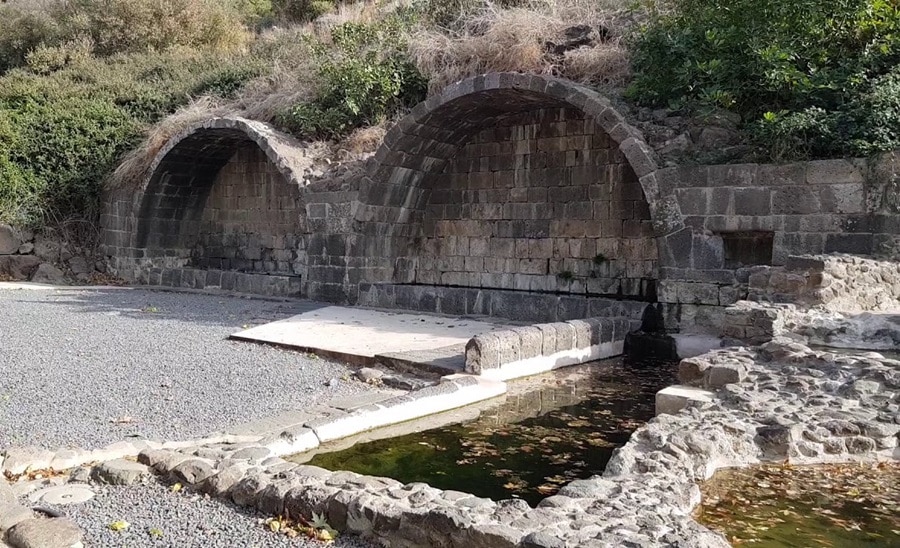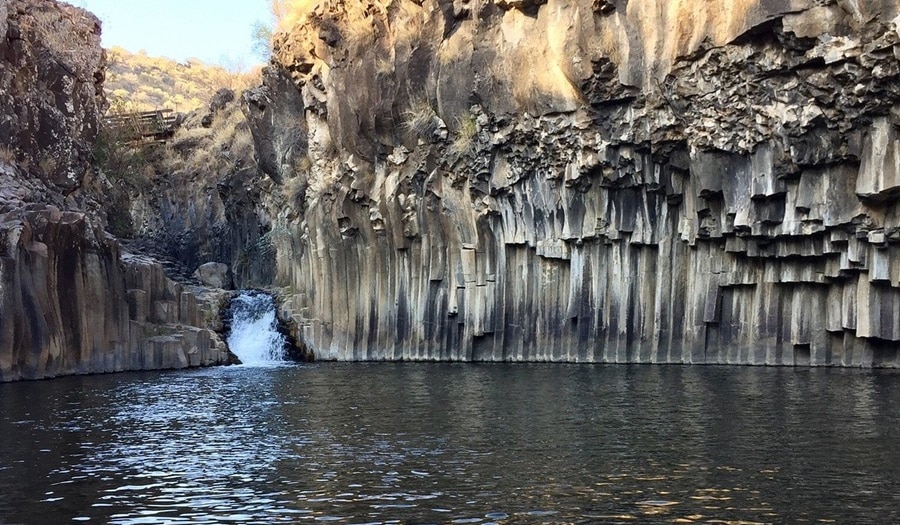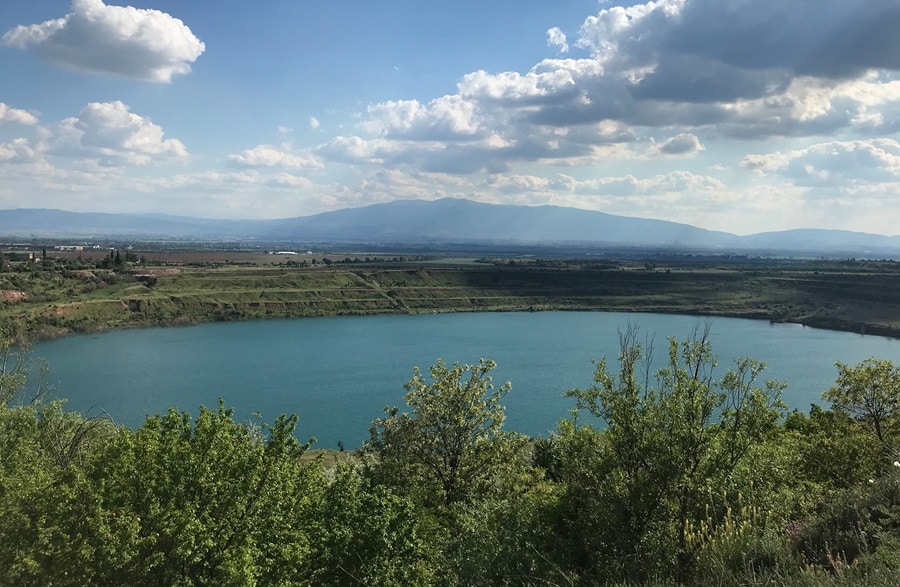The Golan Heights In Northern Israel Art
Many Of Ednah’s Art Features The Golan Heights
View All Of Ednah’s Artwork That Feature The Golan Heights In Northern Israel
The Golan Heights is a region in southwestern Syria and north west Israel. It borders Syria, Israel, Lebanon and Jordan, known for its scenic landscapes, unique biodiversity, and strategic importance. It is known for its unique combination of historical significance, natural beauty, and strategic importance.

Here are the key aspects that define the region:
- Strategic Military Importance
- The Golan Heights is a strategically valuable plateau located on the border between Israel and Syria, with significant elevation overlooking northern Israel, Syria, and parts of Lebanon and Jordan.
- Since Israel captured the region from Syria in the 1967 Six-Day War and formally annexed it in 1981, it has been a point of contention. The Golan Heights provides Israel with a critical military advantage due to its topography and position.
- Rich Archaeological Sites
- The Golan Heights is home to numerous archaeological sites that date back thousands of years, reflecting its place in ancient civilizations. Notable sites include:
- Gamla: An ancient Jewish city with historical importance as a stronghold during the Great Jewish Revolt against the Romans.
- Rujm el-Hiri (Gilgal Refaim): A mysterious megalithic structure of concentric stone circles dating back to the Bronze Age.
- Banias (Caesarea Philippi): An ancient city with Greek and Roman ruins, including a shrine to the god Pan and Christian significance due to mentions in the New Testament.
- These sites provide a glimpse into the lives, religions, and practices of the region’s ancient inhabitants.
- The Golan Heights is home to numerous archaeological sites that date back thousands of years, reflecting its place in ancient civilizations. Notable sites include:
- Beautiful Natural Landscapes and Outdoor Recreation
- The Golan Heights is known for its stunning landscapes, including waterfalls, springs, forests, and volcanic rock formations. Major natural highlights include:
- Banias Waterfall: The largest waterfall in Israel, located in a lush, green reserve.
- Mount Hermon: The highest peak in Israel and the only ski resort in the country, which offers winter sports as well as scenic summer hiking.
- Hiking Trails: Numerous trails throughout the Golan, such as the Yehudiya Forest trails, offer diverse scenery with canyons, rivers, and natural pools.
- The area is popular for hiking, birdwatching, skiing, and camping, attracting both nature enthusiasts and adventure seekers.
- The Golan Heights is known for its stunning landscapes, including waterfalls, springs, forests, and volcanic rock formations. Major natural highlights include:
- Wine Production and Agriculture
- The Golan Heights has become known as one of Israel’s premier wine-producing regions. The cool climate, volcanic soil, and high altitude provide ideal conditions for vineyards, which produce award-winning wines.
- The Golan Heights Winery is one of the most well-known wineries, with international recognition, and it has helped to establish the region as a significant wine destination.
- Diverse Ecosystem and Wildlife
- The region has a varied ecosystem due to its range of altitudes and climates, supporting diverse flora and fauna. In particular, the Golan Heights is home to birds of prey, including vultures, and serves as a critical stop for migratory birds.
- The nearby Hula Valley, a critical migratory stopover for cranes, storks, and other birds, adds to the area’s ecological significance.
- Religious and Cultural Significance
- The Golan Heights has deep-rooted religious connections for Judaism, Christianity, and Islam:
- For Jews, the region is tied to biblical cities of refuge and ancient synagogues that date back to Talmudic times.
- Christians recognize the region for sites linked to Jesus’ ministry, including the Banias area.
- The Druze community has lived in the Golan Heights for centuries, and the region is part of their spiritual homeland.
- This cultural diversity and the presence of ancient religious sites give the area a unique spiritual resonance.
- The Golan Heights has deep-rooted religious connections for Judaism, Christianity, and Islam:
- Political and Diplomatic Tensions
- The Golan Heights over the years has become a recognized annexed Israeli territory by many countries such as the United States and other countries who recognize Israeli sovereignty. The region’s disputed status and its strategic location have made it a focal point in Israeli-Syrian relations and Middle Eastern geopolitics.
- Despite the political tensions, the region, prior to the October 7 attacks on Israel, has maintained relative stability since the 1973 Yom Kippur War, but its future remains a point of diplomatic and military interest.

In sum, the Golan Heights is known for its mix of natural beauty, outdoor activities, archaeological treasures, rich history, agricultural productivity, and strategic and political significance. It draws interest from historians, nature lovers, religious pilgrims, and wine enthusiasts, all captivated by the region’s multifaceted character.
The name “Golan” is steeped in deep historical roots, tracing back to ancient texts and civilizations.
Here’s a look at how the name developed and became associated with the region:
- Biblical Origins: The name “Golan” appears in the Hebrew Bible (Old Testament), where it is mentioned as one of the “cities of refuge” in the region of Bashan, east of the Jordan River. In the Book of Deuteronomy (4:43) and the Book of Joshua (20:8), Golan is identified as a city in the land of Bashan designated as a sanctuary for people who had committed accidental manslaughter, providing them with a place of protection. The name “Golan” likely stems from a Semitic root meaning “circle” or “enclosure,” possibly referring to its geographical layout or function as a safe space.
- Hellenistic and Roman Periods: During the Hellenistic period (circa 3rd century BCE) and Roman period (63 BCE–4th century CE), the Golan Heights was part of various empires that left their mark on its place names and settlements. While the region was known broadly as Bashan, smaller areas or cities retained the name “Golan” in one form or another. However, with successive occupations and changes in control, the name “Golan” was less prominently featured in recorded history during these times.
- Early Islamic Period: In the early Islamic period (7th–8th centuries), Arab sources referred to the area as jabal al-jawlān or simply “Jawlan,” a name phonetically related to “Golan.” The name jabal means “mountain” in Arabic, referencing the region’s elevated topography. Over time, “Jawlan” became the common Arabic term for the area.
- Modern Use and Israeli Adoption: The name “Golan” was revived with its biblical connection when modern Jews began settling in the area in the 20th century. The use of “Golan” was encouraged after Israel took control of the region in 1967, and it has since become the official Hebrew term. The name carries historical and cultural significance for the Israeli population, connecting the land to ancient Jewish history and heritage.
Today, the name “Golan Heights” is widely recognized in English and internationally, with both “Golan” and al-Jawlān used in Hebrew and Arabic, respectively, underscoring the region’s layered history and the ongoing significance of its name across cultures.
The Golan Heights most significant historical and archeological locations
The Golan Heights is rich with historical and archaeological sites spanning thousands of years, each providing insights into ancient civilizations, cultures, and religions.

Here are some of the most significant historically significant locations:
- Gamla
- Description: Often called the “Masada of the North,” Gamla is an ancient Jewish city with a dramatic history. It was a stronghold during the Great Jewish Revolt against the Romans (66-70 CE) and fell after a fierce siege, with many defenders preferring to leap from the cliffs rather than surrender.
- Significance: Gamla includes the ruins of one of the oldest known synagogues in the world (circa 1st century CE) and an impressive, steep landscape with Roman siege artifacts, remnants of city walls, and the foundations of ancient dwellings.
- Natural Attractions: Gamla is also a protected nature reserve, home to various bird species, including vultures, and offers beautiful views of the surrounding Golan.
- Katzrin (Qasrin)
- Description: Katzrin is the site of a reconstructed Talmudic-era village and synagogue. The village provides a glimpse into Jewish life from the 4th–8th centuries CE.
- Significance: The Katzrin synagogue is notable for its basalt stone construction and inscriptions. Archaeologists have reconstructed parts of the village, including houses and olive presses, allowing visitors to experience everyday life during this period. Katzrin is also a modern town and cultural hub in the Golan, with a museum that showcases artifacts from the region.
- Umm el-Kanatir (Ein Keshatot)
- Description: Also known as Ein Keshatot, this site is famous for its well-preserved, 6th-century synagogue and its natural spring. The synagogue is decorated with intricate stone carvings and features a three-arched water fountain.
- Significance: Umm el-Kanatir was a thriving Jewish village during the Byzantine period. The synagogue has been restored in recent years, showcasing elaborate designs that reveal the artistic and cultural achievements of the Golan’s ancient Jewish communities.
- Rujm el-Hiri (Gilgal Refaim)
- Description: Known as Gilgal Refaim or “Wheel of Giants,” Rujm el-Hiri is a massive megalithic structure made of concentric stone circles. It dates back to around 3000 BCE, during the Chalcolithic or early Bronze Age.
- Significance: The purpose of Rujm el-Hiri remains a mystery, with theories ranging from it being a burial site to a ceremonial or astronomical observatory. The outer ring is about 520 feet in diameter, with a central mound that was likely a tomb. Its mysterious design and alignment have fascinated archaeologists, and it is sometimes referred to as the “Stonehenge of the Levant.”
- Mount Hermon Sites
- Description: Mount Hermon, the highest point in the Golan, is home to several ancient shrines and cultic sites dating back to the Hellenistic and Roman periods. The Hermon area was considered sacred by many ancient cultures.
- Significance: Among the sites is a Roman temple dedicated to the god Pan, located at Banias, also known as Caesarea Philippi. This area was mentioned in the New Testament as a place Jesus visited with his disciples. The area’s spring, which feeds into the Jordan River, has long been revered for its natural and religious significance.
- Banias (Caesarea Philippi)
- Description: Banias is an ancient city with ruins dating back to the Hellenistic and Roman periods, built near a large spring at the base of Mount Hermon. Known as Caesarea Philippi in ancient times, it was a center for worship of the Greek god Pan, with shrines, temples, and an impressive cave dedicated to his cult.
- Significance: Banias is an important site in Christian history, as it is mentioned in the New Testament as a place where Jesus is said to have revealed his identity to Peter (Matthew 16:13-20). The ruins at Banias include remains of temples, water channels, and Byzantine-era buildings, reflecting the area’s multi-religious past.
- Hippos (Sussita)
- Description: Hippos, also called Sussita, is a Greco-Roman city located on a hill overlooking the Sea of Galilee. It was part of the Decapolis, a league of ten Greco-Roman cities.
- Significance: The city is associated with Hellenistic and Roman influences, featuring impressive remains like temples, colonnaded streets, and a large basilica. Hippos is also significant in early Christian tradition, with evidence of Christian communities and churches dating to the Byzantine period.
- Ancient Dolmens
- Description: The Golan Heights is home to hundreds of dolmens, which are large, ancient stone burial structures. These dolmens, scattered across the landscape, date back to the Bronze Age.
- Significance: The dolmens are among the oldest man-made structures in the region, offering insight into burial practices and spiritual beliefs of the ancient inhabitants. Many of these structures are still visible, and some are engraved with mysterious symbols.
- Hazor
- Description: Although technically located just southwest of the Golan, Hazor is often associated with the region. Hazor was a major Canaanite and later Israelite city mentioned in the Bible and has extensive archaeological remains.
- Significance: Hazor was one of the largest cities in ancient Canaan and played a central role in various biblical accounts. Excavations have revealed impressive structures, including fortifications, palaces, and temples, shedding light on the Canaanite and Israelite presence in the area.
These sites in the Golan Heights reflect the region’s layered history, from ancient Jewish communities and Greek-Roman influences to early Christianity and mysterious prehistoric structures. The archaeological richness of the Golan Heights offers invaluable insights into the spiritual, cultural, and everyday lives of its many ancient inhabitants, making it a treasure trove for historians, archaeologists, and visitors alike.
Here is what the weather is like there
The Golan Heights has a diverse climate due to its varying elevations and location in northern Israel, with influences from both the Mediterranean and mountainous regions. Here’s a breakdown of the typical weather conditions by season:
Winter (December to February)
- Temperatures: Winter in the Golan Heights can be quite cold, especially in the higher altitudes. Temperatures range from 2–12°C (36–54°F) in most areas but can drop below freezing at night.
- Snowfall: The highest point, Mount Hermon, often receives significant snowfall, making it the only place in Israel where skiing is possible. Snowfall occasionally reaches lower areas, covering villages and towns in a picturesque winter blanket.
- Rainfall: This is the rainiest season, with heavy rains that help replenish the Sea of Galilee and regional streams. The area can receive between 400–900 mm (16–35 inches) of rain per year, most of which falls in the winter months.

Spring (March to May)
- Temperatures: Spring sees a warming trend, with temperatures ranging from 10–20°C (50–68°F) across most of the region. Higher altitudes may remain cooler.
- Weather Patterns: Spring is one of the most beautiful times in the Golan Heights. Wildflowers, including anemones, poppies, and irises, bloom across the landscape. Light rains continue into early spring, but sunny days increase as the season progresses.
- Humidity and Winds: The air is generally crisp and clear, with occasional windy days due to the transition in weather patterns.
Summer (June to August)
- Temperatures: Summers in the Golan Heights are warm to extremely hot, but temperatures vary widely depending on altitude. Lower areas can reach well over to 30°C (86°F) or higher, while higher elevations tend to stay cooler, around 24–27°C (75–81°F).
- Humidity: Humidity is generally low in summer, giving the air a dry and comfortable quality.
- Rainfall: Summers are very dry, with little to no rain, typical of a Mediterranean climate. The landscape becomes drier and more golden, though some areas remain green, especially near water sources.
Autumn (September to November)
- Temperatures: Fall temperatures gradually decrease from summer highs, with average temperatures ranging from 15–25°C (59–77°F). By November, nights become cooler, especially in the mountains.
- Rainfall and Humidity: Early autumn is dry, but rainfall usually resumes by November, gradually restoring the greenery of the region.
- Winds: Breezy days are common, making it a comfortable season for outdoor activities.
Climate Variations by Region
- Mount Hermon: As the highest peak, Mount Hermon has a true alpine climate, with cold, snowy winters and cool, comfortable summers.
- Lower Slopes and Valleys: The foothills and lower areas, such as near the Sea of Galilee, are generally warmer and drier, especially in summer.
- Central Golan Plateau: This area has a mild climate relative to other parts, with cooler summer temperatures and scenic, misty autumn and spring mornings.
Overall Climate
The Golan Heights’ blend of Mediterranean and highland climates creates distinct seasonal contrasts and a mix of lush green in winter and spring and dry golden hues in summer. This seasonal variety, along with snow-capped mountains in winter, contributes to the Golan’s unique and picturesque landscape.
Here’s a breakdown of the geography, wildlife, beauty, historical context and religious diversity you will find in the Golan:
Geography and Location
The Golan Heights spans about 1,800 square kilometers (700 square miles) and is situated in southwestern Syria, northeast of the Sea of Galilee, and north of the Jordan River. It rises to a height of around 1,200 meters (3,937 feet) above sea level at its highest points, providing sweeping views of surrounding areas, including northern Israel and southern Syria.
Wildlife and Plant Life Found In The Golan Heights
The Golan Heights has a rich biodiversity influenced by its Mediterranean and mountainous climates. It hosts various ecosystems, including forests, grasslands, wetlands, and rocky terrains, each supporting unique species.

- Plants: Oak, pine, and cypress forests dominate the higher altitudes, while wildflowers, including poppies, tulips, and anemones, bloom vibrantly in the spring. Rare plant species, such as the Gilboa iris, add to the ecological richness.
- Wildlife: The region is home to animals like gazelles, wild boars, wolves, jackals, foxes, and caracals. Bird species, especially migratory ones, are abundant, making the Golan a key spot for birdwatching. Raptors such as eagles and vultures, as well as storks and pelicans, often migrate through or settle in the area.
Scenic Beauty
The Golan’s beauty is a mix of its natural landscapes and expansive views. With snowy winters on Mount Hermon, vibrant wildflowers in spring, and lush greenery in the lower valleys, the region has year-round visual appeal. The volcanic landforms add a rugged charm, and the panoramic views from high vantage points reveal expansive vistas of the Sea of Galilee, the Jordan Valley, and, on clear days, parts of Lebanon and Syria. This range of visual features makes it a favorite for nature lovers, hikers, and photographers.
Strategic and Historical Significance
Israel took control of the Golan Heights during the Six-Day War in 1967 due to the region’s strategic importance. Its high altitude allowed for a tactical military advantage, as Syrian forces previously used the heights to shell Israeli towns in the Hula Valley below. After taking the area in 1967, Israel formally annexed the Golan Heights in 1981, although this annexation is not widely recognized internationally. Security concerns and the desire to have a buffer zone between Syria and Israel played significant roles in Israel’s decision to retain control of the Golan Heights.
Religious and Cultural Diversity of the Golan
The Golan Heights is religiously diverse, with the following prominent communities:
- Druze: The Druze community is indigenous to the Golan Heights and resides in several villages, such as Majdal Shams and Buq’ata. Their religion is an offshoot of Islam with a strong emphasis on community, mysticism and loyalty.
- Alawite Muslims: This sect, related to Shia Islam, has historical roots in Syria, although they are a small minority in the Golan.
- Judaism: Since Israel took over the region, Jewish Israelis have settled in various communities. Many Jewish residents live in kibbutzim and towns that were established after 1967.
- Christians: Though a minority, there is also a small Christian presence, primarily in mixed communities and towns in the surrounding areas.
The religious significance of the Golan Heights
The Golan Heights holds significant religious importance due to events and historical associations that span multiple faiths, including Judaism, Christianity, and Islam.

Here are some key events and religious traditions connected to the Golan Heights:
- Biblical City of Refuge (Judaism)
- The Golan Heights region is associated with the ancient city of Golan, which the Hebrew Bible identifies as one of the “cities of refuge.” In ancient Israelite law, cities of refuge were designated places where individuals who committed accidental manslaughter could seek asylum to avoid retribution (Deuteronomy 4:43, Joshua 20:8).
- This tradition holds a spiritual and moral dimension, as the cities of refuge embodied mercy, justice, and protection in Jewish law.
- Region of Bashan (Judaism and Christianity)
- In the Bible, the Golan Heights was part of the ancient region of Bashan, which appears frequently in biblical narratives. Bashan was known as a fertile land rich in resources, sometimes described as a place of mighty cities, strong warriors, and abundant cattle (Deuteronomy 3:10).
- Bashan was ruled by King Og, a figure described in the Bible as one of the last of the Rephaim (giants), who opposed the Israelites under Moses’ leadership (Numbers 21:33-35). The Israelite conquest of Bashan, including the defeat of King Og, is an important episode in the Hebrew Bible, symbolizing God’s support for the Israelites.
- Jesus’ Ministry and Miracles (Christianity)
- The Golan Heights region is close to many sites associated with Jesus’ ministry, particularly around the Sea of Galilee. According to the New Testament, Jesus performed several miracles near this area, which Christians believe took place on or near the slopes of the Golan.
- The Miracle of the Swine: One well-known story is Jesus healing a man possessed by demons in the region called “Gadara” or “Gergesa,” near the Golan Heights (Matthew 8:28-34, Mark 5:1-20). In the account, Jesus casts the demons into a herd of pigs, which then rush down a steep bank into the Sea of Galilee. This miracle is sometimes associated with modern locations near the Golan Heights, although the exact location is debated.
- The proximity of the Golan Heights to significant New Testament locations makes it part of the landscape of early Christian history and tradition.
- Prophetic and Eschatological Significance (Judaism, Christianity, and Islam)
- The Golan Heights and surrounding regions hold eschatological significance in some religious traditions. In certain Jewish and Christian beliefs, the Golan is included in the lands that will play a role in events related to the coming of the Messiah or the End Times.
- The area is also seen as part of the Promised Land in Jewish tradition, given by God to the descendants of Abraham, Isaac, and Jacob. This promise is viewed as a foundational covenant in Judaism, adding spiritual weight to the land itself.
- In Islam, there are hadiths (sayings of the Prophet Muhammad) that describe battles and events in the Levant, including regions near the Golan Heights, as part of the events of the End Times, making the area symbolically significant in Islamic eschatology.
- Druze Religious Significance
- The Druze community, an ethno-religious group with a monotheistic faith that branched from Islam, has deep-rooted connections to the Golan Heights. The Druze consider the region part of their homeland, and some of their sacred sites are located in or near the Golan.
- While the Druze faith is distinct, it shares influences from Islam, Neoplatonism, and other mystical traditions, and their communities have a special reverence for the land they have inhabited for centuries.
- Ancient Synagogues and Religious Artifacts
- Archaeological excavations in the Golan Heights have uncovered ancient synagogues from the Talmudic period (3rd to 8th centuries CE), including well-preserved ruins in places like Katzrin and Ein Keshatot (Umm el-Kanatir). These synagogues reveal the area’s historical Jewish communities and their architectural and religious contributions.
- The presence of these ancient religious sites highlights the region’s importance as a center of Jewish life in the post-Second Temple period, adding historical and religious significance to the Golan Heights for Jews today.
In summary, the Golan Heights carries religious weight as a historical, prophetic, and sacred landscape. It is intertwined with ancient stories of refuge and conquest, miracles associated with Jesus, and eschatological beliefs, all of which contribute to its significance in Judaism, Christianity, Islam, and the Druze faith.
Some of the most beautiful natural wonders in the Golan
The Golan Heights is renowned for its diverse and striking natural wonders, which range from scenic waterfalls and lush forests to volcanic landscapes and panoramic mountain views.

Here are some of the most beautiful natural sites in the region:
- Mount Hermon
- Description: Mount Hermon is the highest peak in Israel, reaching up to 2,814 meters (9,232 feet). Its snow-capped peaks in winter are especially breathtaking and draw visitors for skiing, making it the only ski resort in Israel.
- Beauty: With snow-covered slopes in winter and wildflowers in the warmer months, Mount Hermon offers incredible vistas, including views of the surrounding Golan Heights, northern Israel, Lebanon, and Syria. The mountain’s alpine terrain is rare for the region and creates a unique ecosystem.
- Banias Nature Reserve (Hermon Stream)
- Description: This lush reserve is centered around the Banias Spring, one of the main sources of the Jordan River, and is home to the famous Banias Waterfall, Israel’s largest year-round waterfall.
- Beauty: The reserve is a green oasis with clear, flowing waters, dense vegetation, and trails that wind through forested areas and along cliffs. The Banias Waterfall, with its powerful cascade into a rocky pool, is especially beautiful and is surrounded by an enchanting natural setting.
- Gamla Nature Reserve
- Description: Known as “The Masada of the North,” Gamla is both an archaeological site and a nature reserve. It features ancient ruins, including the remains of a Jewish city and one of the oldest synagogues, as well as nesting grounds for Griffon vultures.
- Beauty: Gamla’s dramatic cliffs and rocky landscape, along with panoramic views of the Sea of Galilee, make it a stunning location. The reserve’s rugged beauty is enhanced by seasonal wildflower blooms and the graceful sight of vultures and other birds soaring over the cliffs.
- Nahal Yehudiya (Yehudiya Stream)
- Description: Nahal Yehudiya is a canyon system with several beautiful waterfalls, natural pools, and a scenic hiking trail. It’s part of the Yehudiya Forest Nature Reserve, which covers a large area of diverse landscapes.
- Beauty: The Yehudiya waterfalls, especially the Yehudiya and Zavitan falls, are set amid dramatic basalt cliffs and deep pools. The combination of waterfalls, lush greenery, and unique basalt formations creates an almost tropical feel, providing visitors with stunning sights and refreshing pools for swimming.
- Zavitan Stream and Black Basalt Pools
- Description: The Zavitan Stream is known for its striking basalt rock formations, deep pools, and waterfalls. The Black Basalt Pools, in particular, are popular for their distinctive dark rock color.
- Beauty: The contrast of black basalt rocks with clear, blue-green water makes these pools visually striking. Surrounded by rugged cliffs and greenery, the Zavitan Stream area feels secluded and untouched, offering a unique experience for hikers and nature lovers.
- Lake Ram
- Description: Lake Ram, or Birkat Ram, is a crater lake near the base of Mount Hermon. It was formed in an ancient volcanic crater and is fed by underground springs.
- Beauty: The lake’s circular shape and its reflection of the surrounding mountains make it especially picturesque. In spring, the area around the lake blooms with wildflowers, enhancing its natural beauty. The lake’s tranquil, almost mirror-like water creates a serene atmosphere, perfect for quiet picnics and photography.
- Rujm el-Hiri (Gilgal Refaim)
- Description: Rujm el-Hiri, also known as “Wheel of Giants” or “Gilgal Refaim,” is a mysterious ancient stone structure composed of concentric circles, believed to date back to 3000 BCE.
- Beauty: While its main appeal is archaeological, the structure’s arrangement on the landscape is captivating, especially when seen from above. The surrounding landscape, with its rolling hills and plains, has an austere, rugged beauty. During spring, wildflowers add color to this ancient site, contrasting with the rough stone rings.
- Mount Bental and the Valley of Tears
- Description: Mount Bental is a dormant volcanic cone with a vantage point that offers panoramic views of the Golan Heights, northern Israel, and Syria.
- Beauty: The views from Mount Bental are sweeping and dramatic, especially at sunrise or sunset. Visitors can see the Valley of Tears below, a site of historical significance from the Yom Kippur War, and the beauty of the open landscapes dotted with fields, mountains, and valleys stretching into the horizon.
- Hula Valley and Agamon Hula Nature Reserve
- Description: Although just outside the Golan Heights, the Hula Valley is an essential natural area for migratory birds and is easily accessible from the Golan. The Agamon Hula Nature Reserve is particularly famous as a birdwatching paradise.
- Beauty: The Hula Valley’s wetlands and seasonal lake are surrounded by lush green fields and distant mountain ranges. During migration seasons in spring and autumn, tens of thousands of cranes, pelicans, and storks visit the valley, creating a stunning spectacle of avian diversity against a vibrant landscape.
- Ein Tina (Tina Spring)
- Description: Ein Tina is a natural spring in the Golan Heights that feeds into a small stream with a beautiful pool and gentle waterfalls.
- Beauty: The spring area is surrounded by greenery, including reeds and small trees, and provides a refreshing oasis during the hot summer months. Visitors can walk along the stream, enjoying the sound of flowing water and the tranquil surroundings, making it a hidden gem in the Golan.
The Golan Heights’ natural wonders range from waterfalls and volcanic landscapes to tranquil lakes and panoramic mountain views. Each season brings unique beauty, from snow-covered peaks in winter to blooming wildflowers in spring, creating an ever-changing landscape. These scenic spots offer visitors a profound connection to nature and a glimpse into the region’s remarkable geographical diversity.
Overall, the Golan Heights’ combination of natural beauty, biodiversity, historical significance, and cultural diversity makes it a fascinating and contested region in the Middle East.